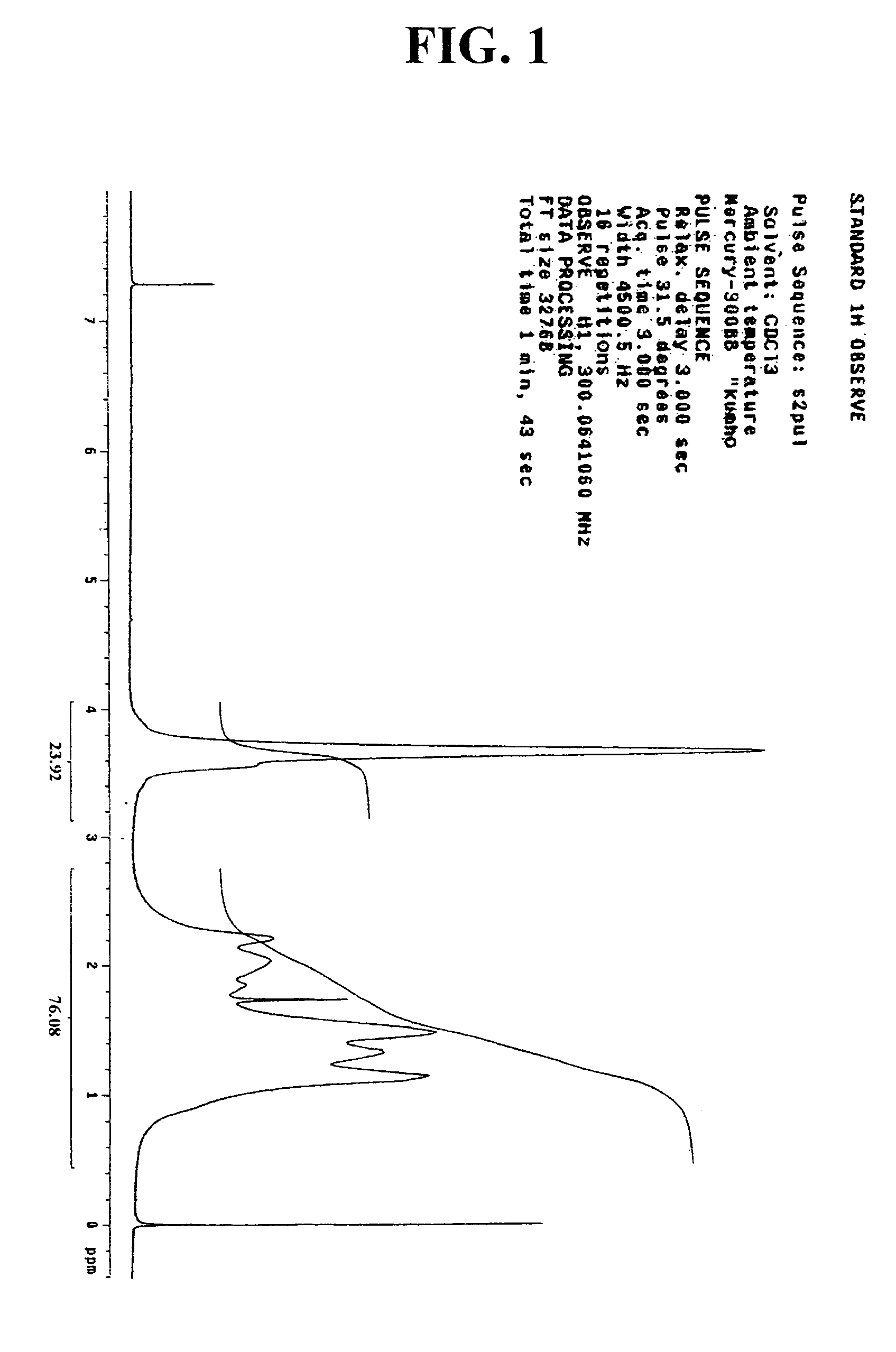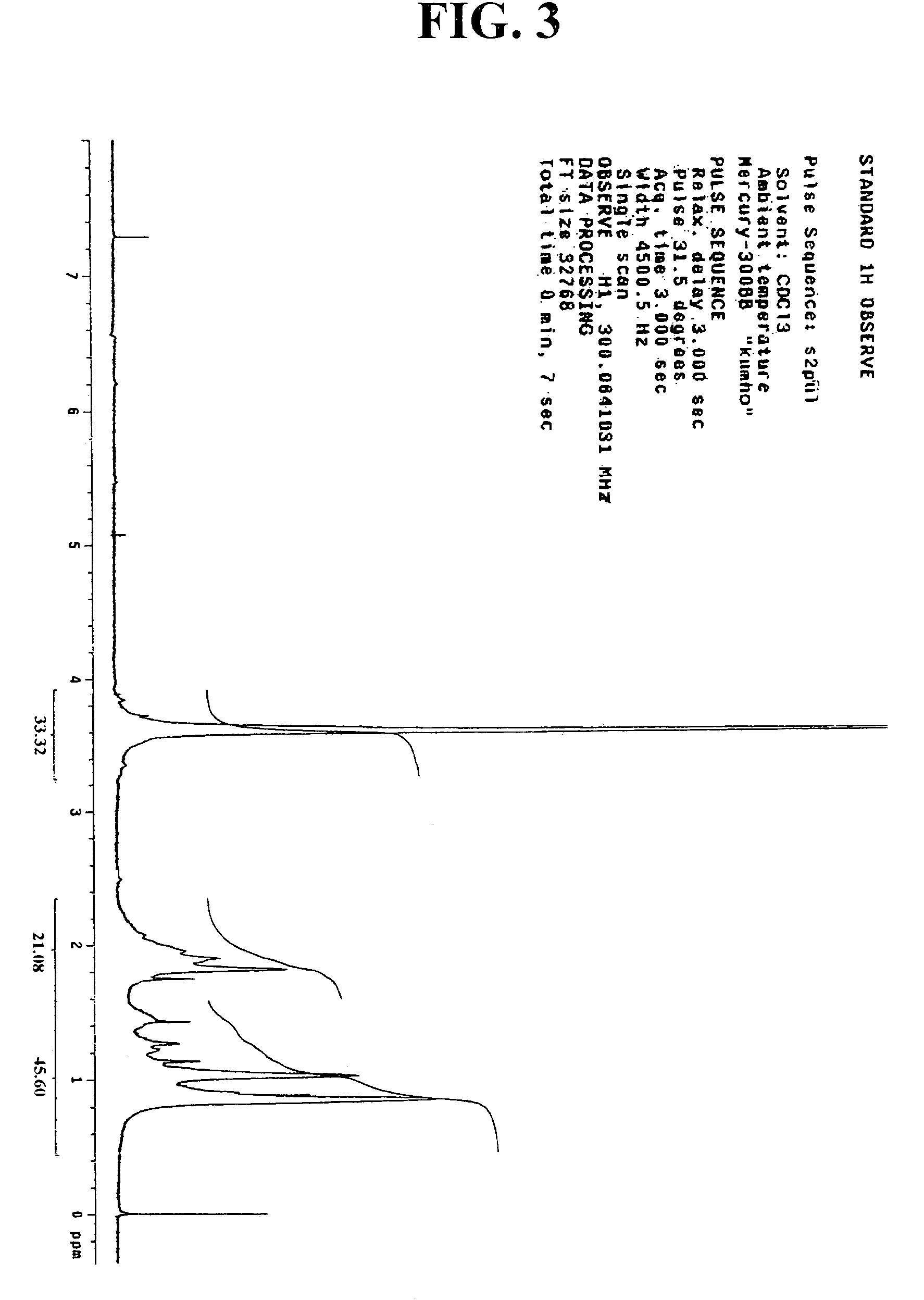Polymer and chemically amplified resist composition containing the same
a technology of resist and polymer, which is applied in the direction of photosensitive materials, instruments, auxillary/base layers of photosensitive materials, etc., can solve the problems of low light absorption of acrylate polymer, poor dry plasma etching resistance of chemically amplified resists used in arf excimer lasers, and difficult mounting of resist patterns upward stably on the substrate, etc., to achieve the effect of increasing etching resistance and solubility
- Summary
- Abstract
- Description
- Claims
- Application Information
AI Technical Summary
Benefits of technology
Problems solved by technology
Method used
Image
Examples
synthesis example 1
[0067]44 g of norbomene and 2.6 g of dimethyl azobisisobutylate used as an initiator, together with 68 g of ethyl acetate were added to a reaction flask. The air in the flask was replaced with nitrogen gas, and the flask was heated to have its inner temperature raised to 70° C. At the inner temperature of 70° C., 10 g of methyl acrylate was slowly added dropwise with a syringe pump for 2 hours. After an 8-hour reaction at this temperature, the reaction mixture was added dropwise to 1.2 L of hexane. The precipitate thus obtained was filtered under vacuum and dried in a vacuum oven at 70° C. to obtain a polymer represented by the following Formula 4. The polymer thus obtained was analyzed in regard to its structure and substitution by 1H-NMR. The result is presented in FIG. 1. In addition, the molecular weight of the polymer was determined by GPC, of which the result is presented in FIG. 2.
[0068]Yield: 15 g;
[0069]Weight average molecular weight: 6,720;
[0070]Molecular weight distributi...
synthesis example 2
[0073]44 g of norbomene and 2.6 g of dimethyl azobisisobutylate used as an initiator, together with 68 g of ethyl acetate were added to a reaction flask. The air in the flask was replaced with nitrogen gas, and the flask was heated to have its inner temperature raised to 70° C. At the inner temperature of 70° C., 11.6 g of methyl methacrylate was slowly added dropwise with a syringe pump for 2 hours. After an 8-hour reaction at this temperature, the reaction mixture was added dropwise to 1.2 L of hexane. The precipitate thus obtained was filtered under vacuum and dried in a vacuum oven at 70° C. to obtain a polymer represented by the following Formula 5. The polymer thus obtained was analyzed in regard to its structure and substitution by 1H-NMR. The result is presented in FIG. 3. In addition, the molecular weight of the polymer was determined by GPC, of which the result is presented in FIG. 4.
[0074]Yield: 15 g;
[0075]Weight average molecular weight: 6,200;
[0076]Molecular weight dist...
synthesis example 3
[0079]The producers were performed in the same manner as described in the Synthesis Example 1, excepting that 21.4 g of cyclohexyl methoxy acrylate was used instead of methyl acrylate. The final product was a polymer represented by the following Formula 6. The polymer thus obtained was analyzed in regard to its structure and substitution by 1H-NMR and in regard to its molecular weight by GPC.
[0080]Yield: 24.3 g;
[0081]Weight average molecular weight: 6,050;
[0082]Molecular weight distribution: 1.69;
[0083]Substitution analysis by 1H-NMR: l=0.41, m=0.59
[0084]
PUM
| Property | Measurement | Unit |
|---|---|---|
| time | aaaaa | aaaaa |
| temperature | aaaaa | aaaaa |
| molecular weight distribution | aaaaa | aaaaa |
Abstract
Description
Claims
Application Information
 Login to view more
Login to view more - R&D Engineer
- R&D Manager
- IP Professional
- Industry Leading Data Capabilities
- Powerful AI technology
- Patent DNA Extraction
Browse by: Latest US Patents, China's latest patents, Technical Efficacy Thesaurus, Application Domain, Technology Topic.
© 2024 PatSnap. All rights reserved.Legal|Privacy policy|Modern Slavery Act Transparency Statement|Sitemap



